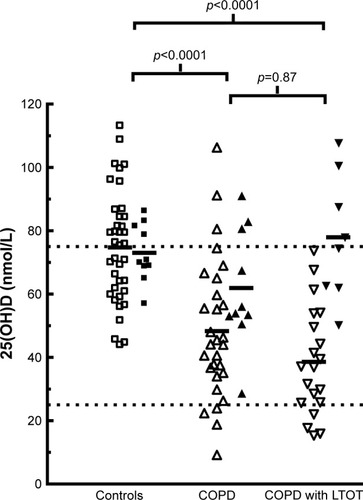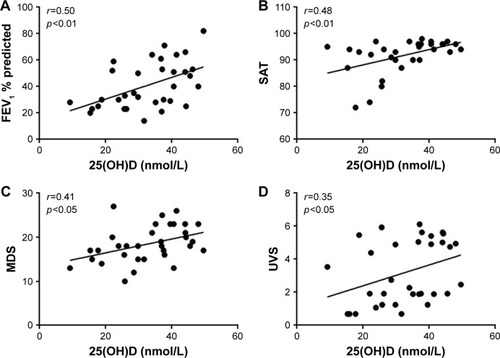Figures & data
Table 1 Characteristics of the study sample controls (column A) vs COPD subjects (column B) and COPD subjects without vitamin D deficiency (defined as 25(OH)D $50 nmol/L; column C) vs COPD subjects with deficiency of vitamin D (column D)
Figure 1 Peak annual values of 25(OH)D in controls (n=47) and COPD subjects without LTOT (n=38) and with LTOT (n=28).
Abbreviation: LTOT, long-term oxygen therapy.

Figure 2 All COPD subjects (n=66).
Abbreviations: CAT, COPD Assessment Test; UVS, Ultraviolet Score.

Figure 3 COPD subjects with values <50 nmol/L without vitamin D supplementation (n=33).
Abbreviations: FEV1 % predicted, forced expiratory volume in 1 second as % predicted; MDS, Mediterranean Diet Score; SAT, blood oxygen saturation; UVS, Ultraviolet Score.

